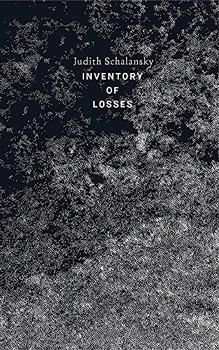Summary | Excerpt | Reviews | Beyond the Book | Readalikes | Genres & Themes | Author Bio

In the lee of a swampy depression, a herd of deer browses. As I draw closer, they gallop down to the wood, their white flags flashing. On the edge of the kettle hole a scrap of camouflage material flutters on the frame of a raised hide. Not far off some mossy concrete roof slabs are piled up in front of leafless hedges of bramble, elder and blackthorn. Rusty loops of low-grade steel poke out of the reinforcement holes, now exposed and at the mercy of the weather. Moss as black as algae has taken over the porous blocks. Behind this, sheltered by the sparse undergrowth, a streaky green pond lies quietly in its ice-age hole, a spawning place for frogs and toads, which wait, out of sight, for the signal to procreate. The withered grass has dried to a waxy yellow, bleached by the winter. Only the leaves of the buttercup burst in abundance, spinach-green, from the damp black earth.
I go back to the ditch, follow it until the water disappears underground in a concrete pipe. On the horizon, the bright blades of the wind turbines go round, living machines. I think of the black horsehead pumps I saw as a child, and their sinister stoical thrusting into the depths of the earth. It was the last ice age that formed this region, the lowlands of the Ryck valley, a tongue-shaped basin in a gently undulating moraine landscape, its fields and kettle holes edged with massive boulders worn smooth by sandy debris and glacial water. The deeper layers hold rich resources of crude oil and salt.
A few hundred meters further southwest, grey-barked birches mark out the onward path of the stream. I cut across country until I reach its now slightly broader bed. The narrow unploughed strip meanders between the field and the ditch, barely two meters wide. The carpet of greenery is ripped open in places. The peaty earth shimmers damply, churned up by wild boar. A skylark ascends, warbling, into the sky and its breathless song announces the spring, though it seems far-off, inconceivable even. For the first time the water is audible now too. It flows, gurgling softly, towards a patch of woodland and disappears beneath some hazel bushes. I plunge into the intimate stillness of the wood. Here, sheltered from the penetrating east wind, the ground is still thick with the withered, ash-colored fallen leaves from the previous year. The undergrowth is earthy and grey, all except for the heath pearlwort, green as parsley. And the winter aconites on the point of blossoming into egg-yolk yellow stand erect with their leaves fanned out. As the wood begins to thin out, I discover—among brushwood, pine cones, and deer scat with its blue-black sheen—the shed antlers of a stag. The dark brown bony structure weighs heavy. I run my hand over the pleasantly chapped, leathery hard surface with its knobbly protrusions, and over the smooth tips of the tines. At the bulging ring that was once attached to the pedicle on the stag's skull there are still tufts of hair from the animal, which must have discarded its headgear only recently. The alabaster-white, scabbily rough bone tissue at the rupture point feels sharp as coral. It must have taken some strength to cast off the antlers. The bark of the nearby spruces is streaked with score marks. Milky resin oozes from the wounds like frozen blood. Some trunks have been gnawed bare by the hungry deer.
A gust of wind rustles the treetops, the sky brightens, and for a moment the pale disc of the sun glows through the wall of cloud. It casts no shadows, but immediately there is a buzz of activity in the air, and the birds grow louder: the mechanical chatter of the magpies, the unflagging song of the chaffinches, the tuneful warble of the blackbirds and the melancholy sing-song of the robins.
As I emerge from the wood, a carrion crow takes flight, sails, cawing, over the field speckled green with winter barley, swoops down time and again without interrupting its hoarse call. The landscape looks different, peaceful, tidy. A perfectly straight clay footpath lined with leafless willows follows the ditch as far as the next hamlet. Schnapps bottles from obsolete brands lie in the water. Arching out left of the footpath from the withered undergrowth are reddish grey bramble stems. Birds' nests are perched in the bare hedges. And beneath a hawthorn bush lie dozens of chalky-pale, shattered snails' shells and the stones where blackbirds and thrushes have smashed the armor-plating to extract the soft flesh. The mud churned up by tractor tyres and softened by rain and meltwater yields underfoot with every step I take. The puddles have taken on the color of their surroundings. It is the umber of wet clay and the murky swamp, a uniform waxy hue with little in the way of contrast, save for the spring-green tinged branches of pussy willow quivering with silvery young catkins in the frosty air. Their silky fur has only just unpeeled itself from the sticky buds.
Excerpted from An Inventory of Losses, copyright © 2018 by Judith Schalansky, translation copyright © 2019 by Jackie Smith. First published as Verzeichnis einiger Verluste by Suhrkamp Verlag, Berlin. Reprinted by permission of New Directions Publishing Corp.
Your guide toexceptional books
BookBrowse seeks out and recommends the best in contemporary fiction and nonfiction—books that not only engage and entertain but also deepen our understanding of ourselves and the world around us.